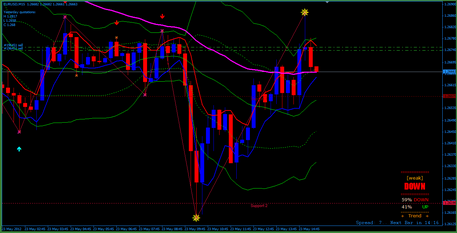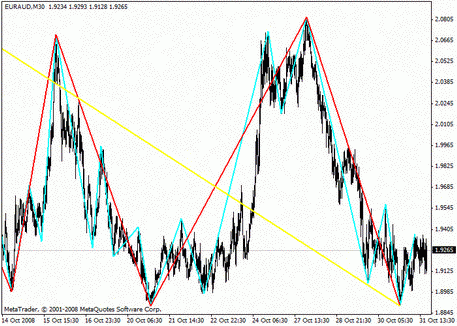
Currency Band
Saturday, 12 August 2017 06:54
Only a few factors can affect the state economy as much as changes in the exchange rate of the national currency. A stable rate creates favorable conditions for business development, and the state treasury is filling with taxes and other payments. However, regarding the modern foreign exchange market, it’s impossible to predict the behavior of the exchange rate. The quotes of the currency are influenced by a lot of the fundamental factors, which can lead to the unpredictable consequences of the political and economic instability.
Nevertheless, the price fluctuations can move within a certain range. It is called the currency band.
How Is the Currency Band Formed?
The limits of the currency band are set by the Central Bank, to support the national currency.
The National Bank monitors the fluctuations of the exchange rate continuously, and adjusts it, if necessary, using currency interventions. Interventions mean a set of actions of buying or selling the currency, which leads to its strengthening or weakening, depending on the interests of the state.
The boundaries of the currency band are specified in the official documents. It allows traders to be not afraid of too sharp jumps in quotes. At the same time, the government reduces the risks in foreign transactions, which leads the strengthening of the economy. As a result, banks can form more objective forecasts of their incomes and outgoings.
At the same time, such an approach entails certain negative consequences. A long and stable currency band increases the volume of the investments in the economy of the country, so the natural market competition is violated.

That’s why such a method is used mostly as an interim measure. It should also be noted that the wider borders of the currency band allow, the more objective fluctuations of the exchange rate, relative to the real level of demand and supply.
Most often, such an approach is applied in countries with a lack of the free capital on the financial market, and as a result of the significant debts, either internal or external. The post-Soviet countries, such as Russia, Ukraine, Moldova, Belarus, Kazakhstan, use this approach actively. It’s also used sometimes in China, Mexico, Israel, and Chile.
How Does the Price Stay within the Range?
- If the price reaches the lower limit of the band, the national bank starts buying up the currency, so that the price rises again;
- If the price rushes to the upper border of the band, then the Central Bank sells it actively, until the exchange rate drops to the desired level.
When the state starts to support the rate, it always affects the foreign exchange market, which must be taken into account by traders.
The central banks of the countries are tremendous players in the financial market. If they start an intervention, the further behavior of the graphs cannot be predicted. No technical analysis tool displays objective data in such conditions, so the trader must follow the news, and avoid trading at this time.
Don’t expect to catch the moment of the mass currency buying, or selling, waiting for a big profit. Practically, such an excitement can lead a trader to losses only.
Share
Related articles
- Previous article: Forex Trading With No Indicators
- Next article: Liquidity Aggregators

 English
English
 русский
русский



